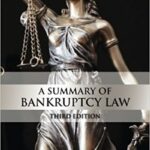When  the means test projected disposable income number is greater than 100% of the unsecured claims, full repayment is sufficient. The means test calculation only kicks in under §1325(b) if a party objects; no one objects to repayment of everything that is owed.
the means test projected disposable income number is greater than 100% of the unsecured claims, full repayment is sufficient. The means test calculation only kicks in under §1325(b) if a party objects; no one objects to repayment of everything that is owed.
A new bankruptcy attorney brought me a B 22 form for a review: the monthly number he’d calculated was over $2500 a month, a staggering burden should it control the Chapter 13 payments.
What had been missed was the fact that the total unsecured debt was “only” about $80,000. With ample income, the debtors would have to pay interest on the debts, but at the federal judgment rate, not credit card rates. So, worst case, the debtors’ payment would be closer to $1500 than $2500, because that is all it takes to pay 100% of the debt.
In this case, it got better because we found missed deductible expenses and an understated tax obligation going forward. The debtors will make a significant but not crippling Chapter 13 payment.
Despite our frequent grumblings, the means test is not punitive. The debtors do not have to do any more than repay creditors in full.
Image courtesy WalknBoston








Cathy, I am confused about the application of the federal judgment rate to unsecured debt in a Chapter 13. Isn’t the amount to be paid to unsecureds determined by proofs of claim filed, and isn’t that amount then repaid (if a 100% plan) in full over the course of the plan? I do not see where the federal interest rate comes into the picture, please advise (code or case reference would be awesome).
And thanks for the blog, I love the insight!
The application of right to interest is most clear in the “best interests of creditors” test, which looks at the distribution in a hypothetical Chapter 7 case. See 726(a)(5).
Where funding the plan is driven by income, I’m extrapolating that “best efforts” for high income debtors would include interest, to avoid a challenge for lack of “good faith”. Gotta confess I haven’t researched it.
You’re right that only creditors who file claims get paid, so a 100% plan is full payment to those who file.